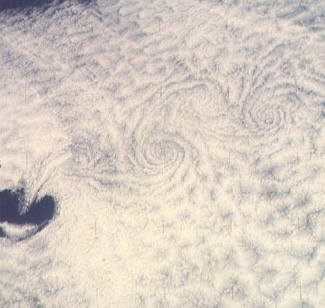


In contrast to the warming effect of the higher clouds, low stratocumulus clouds act to cool the Earth system. Because lower clouds are much thicker than high cirrus clouds, they are not as transparent: they do not let as much solar energy reach the Earth's surface. Instead, they reflect much of the solar energy back to space (their cloud albedo forcing is large). Although stratocumulus clouds also emit longwave radiation out to space and toward the Earth's surface, they are near the surface and at almost the same temperature as the surface. Thus, they radiate at nearly the same intensity as the surface and do not greatly affect the infrared radiation emitted to space (their cloud greenhouse forcing on a planetary scale is small). On the other hand, the longwave radiation emitted downward from the base of a stratocumulus cloud does tend to warm the surface and the thin layer of air in between, but the preponderant cloud albedo forcing shields the surface from enough solar radiation that the net effect of these clouds is to cool the surface. | |
 Image from the Second Skylab manned mission on August 1, 1973 showing stratocumulus clouds over the Pacific Ocean. | |
|
next: Deep Convective Clouds
return: Clouds & Radiation |